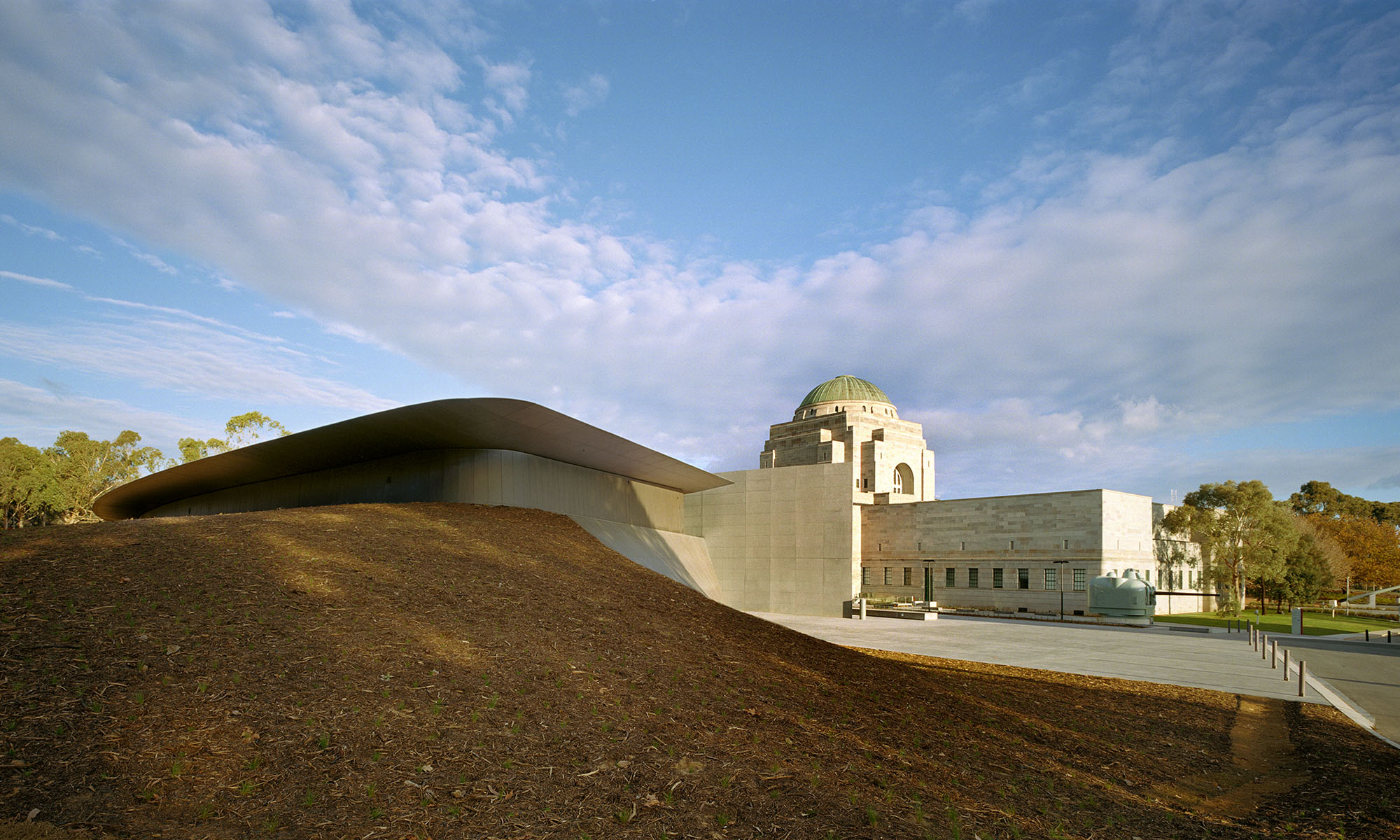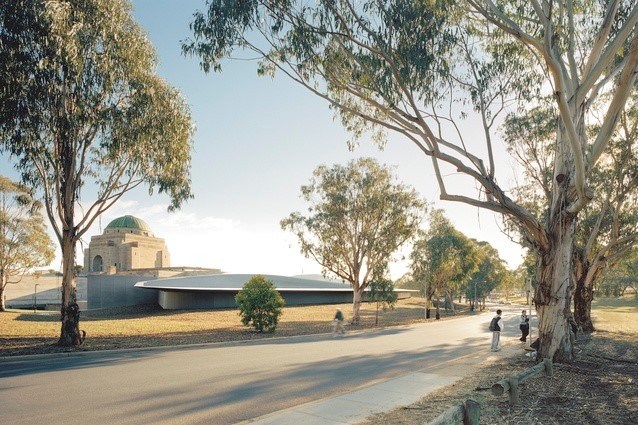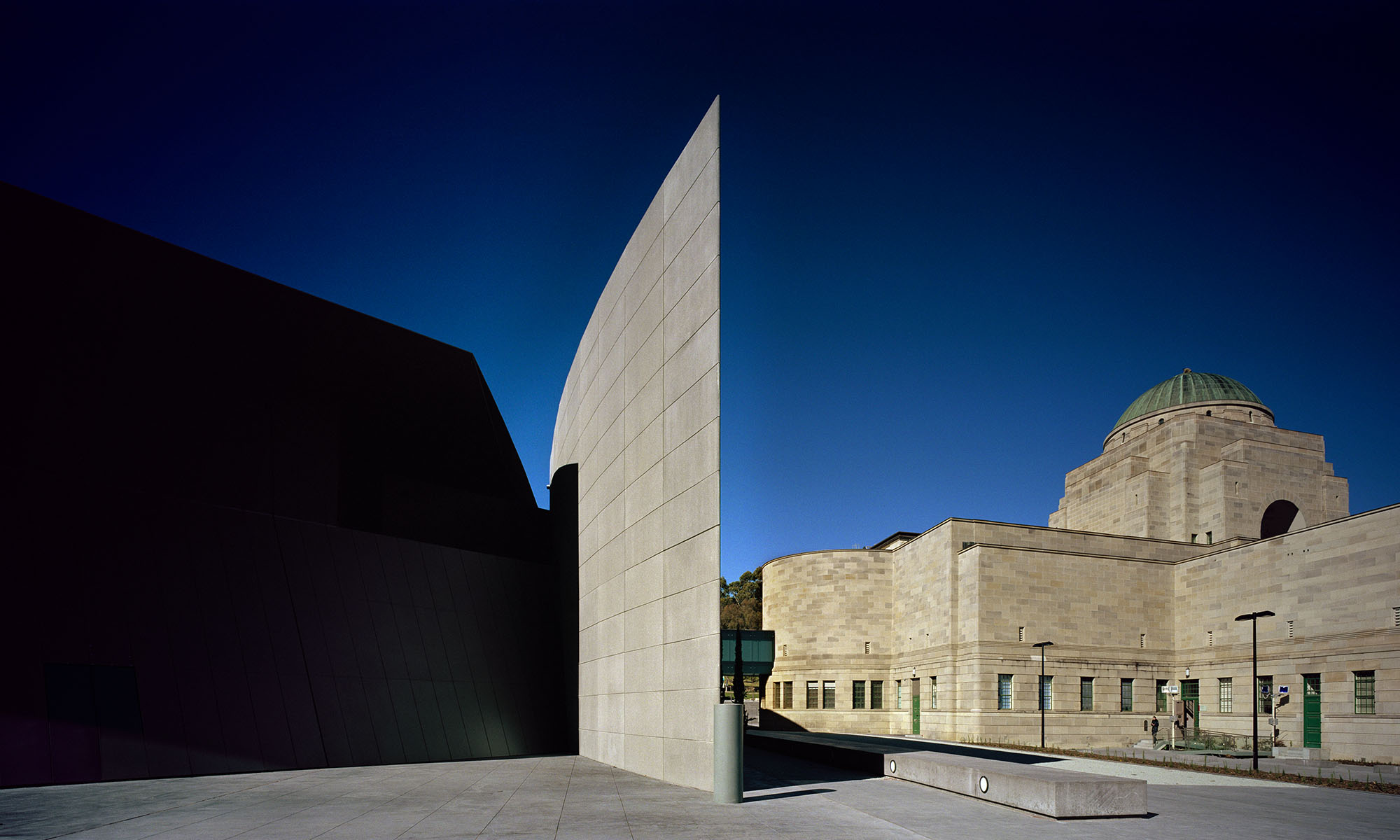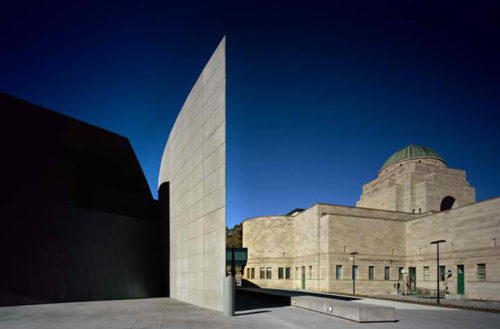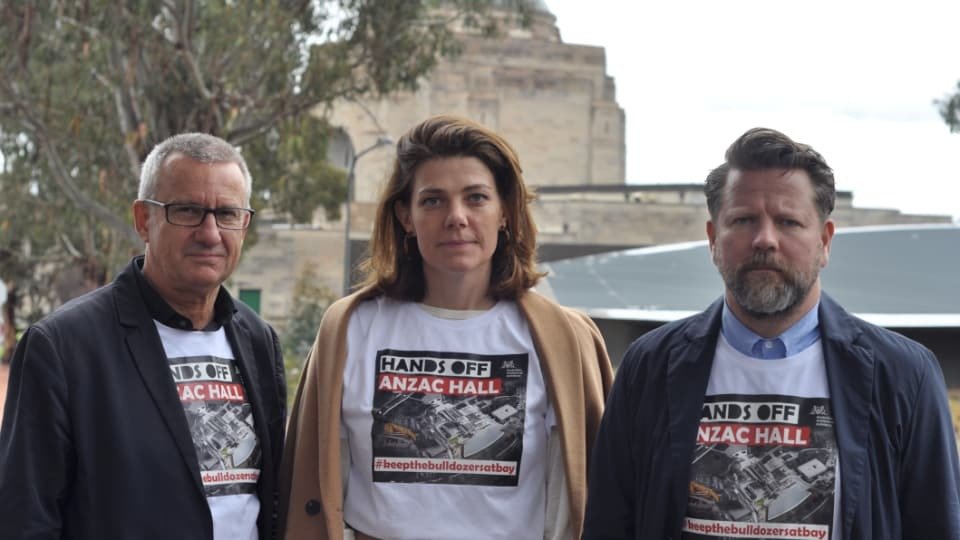Design Matters with Tony Trobe
The Canberra Times
16 December 2018
Design Matters CT
Hands Off Anzac Hall
Architectureau
Philip Leeson
28 November 2018
Philip Leeson, ACT Chapter President of the Australian Institute of Architects, argues that the federal government’s plans to demolish and replace the Denton Corker Marshall-designed Anzac Hall in Canberra at a cost of $498 million are “unnecessary and wasteful.”
‘Hands off Anzac Hall’!
The RiotACT
ACT Chapter President of the Australian Institute of Architects
Philip Leeson
27 November 2018
The local architecture community was deeply shocked when news first broke of plans to demolish Anzac Hall. Surely, this was a mistake, as there had been limited consultation with the community and no consultation with the moral rights holders – the architects who designed the award-winning building – nor with the Australian Institute of Architects.
Tenders for War Memorial’s $500m revamp could go out this year
The Canberra Times
Elliot Williams
25 November – 12.00am
The Australian War Memorial expects to begin procurement for its $498 million redevelopment before the year is out or in early 2019 as the major overhaul progresses.
The redevelopment is still in its infancy but has generated strong reactions from supporters and detractors since it was unveiled.
‘Colossal Waste’: Australian War Memorial’s $498m redevelopment plan draws ire of architects
ArchitectureAU
Linda Cheng
2 November 2018
The Australian government has backed the Australian War Memorial’s plans for a major expansion of its gallery and exhibition space in Canberra, with Prime Minister Scott Morrison announcing that the government would provide $498 million over nine years “to see these plans fulfilled.”
Fears Anzac Hall to be demolished in war memorial redevelopment
The Canberra Times
Elliot Williams
28 October 12.17pm
The architects behind the Australian War Memorial’s Anzac Hall have pleaded with the memorial to abandon what they believe are plans for its demolition.
Architects go to war over ANZAC Hall, urge alternative to Memorial’s expansion
RiotACT
Ian Bushnell
7 November 2018
The Director of the Australian War Memorial has found himself under assault from a furious architecture profession and the architects who designed the award-winning Anzac Hall over his plans for a massive expansion of the institution.
Institute says plans to demolish Anzac Hall are ‘shocking, distressing’
Plans to demolish award-winning Anzac Hall, as unveiled today by the Australian War Memorial, have been described as ‘deeply distressing’ by the Australian Institute of Architects.
While fully supporting moves to honour and better tell the stories of Australia’s servicemen and women, National President Clare Cousins said the Institute was shocked at the lack of consultation with the community, the Institute and the architectural moral right holders of the existing structure.
Opened in 2001 at a reported cost of $11.3 million, Anzac Hall has been lauded for its sensitivity to the heritage and cultural context of this national memorial while also providing functional design.
Architects Denton Corker Marshall won the Institute’s prestigious national Sir Zelman Cowen Award for Public Architecture for the building in 2005.
‘As architects we are passionate about preserving Australia’s heritage and honouring our national history, nowhere more so than the extraordinary service and sacrifice of the servicemen and women,’ Ms Cousins said.
‘That’s why Anzac Hall was designed with such care and sensitivity to the highest standards of design excellence, an effort recognised when it was selected above any other piece of public architecture to receive the Sir Zelman Cowen Award.
‘Bringing in the bulldozers to destroy such an investment – of effort, of culture and at the end of the day taxpayer dollars – is a colossal waste and mark of disrespect.
‘It is incomprehensible that in planning what would otherwise be such a welcome extension at the War Memorial, so little regard has been shown for the cultural significance of Anzac Hall, which is a national landmark and much-loved exhibition space.
‘There has to be another way forward and the Institute is willing to work with the Federal Government and the Australian War Memorial’s management to find an acceptable alternative.’
‘The apparent secrecy surrounding the plans, which were reportedly being explored since 2015, together with the complete lack of consultation is hugely disturbing.
‘The Australian War Memorial is one of our nation’s most significant monuments and a site of immense pride and emotion.
‘All Australians deserve a say in its future – not a small group of elites.’
The announcement comes on the day Australia’s leading architects gather in Melbourne for the annual National Architecture Awards presentation, the same ceremony at which Anzac Hall was recognised 13 years ago.
‘At only 17 years of age, Anzac Hall is considered young in building terms, where average lifecycles are 50 to 100 years,’ Ms Cousins said.
‘The Institute is resolved to fight these plans. We must put an end to the pattern emerging which treats major public works as somehow disposable.’
Architects launch campaign to save Anzac Hall from destruction
The Canberra Times
Elliot Williams
11 November 2018, 12:00am
Of the 18 possible proposals explored for the redevelopment of the Australian War Memorial, 17 did not include the demolition of Anzac Hall, according to the head of Australia’s peak architecture industry body.
Hands off Anzac Hall campaign launches
The Australian Institute of Architects launched its Hands off Anzac Hall on 7 November, opposing plans to demolish this award-winning building.
